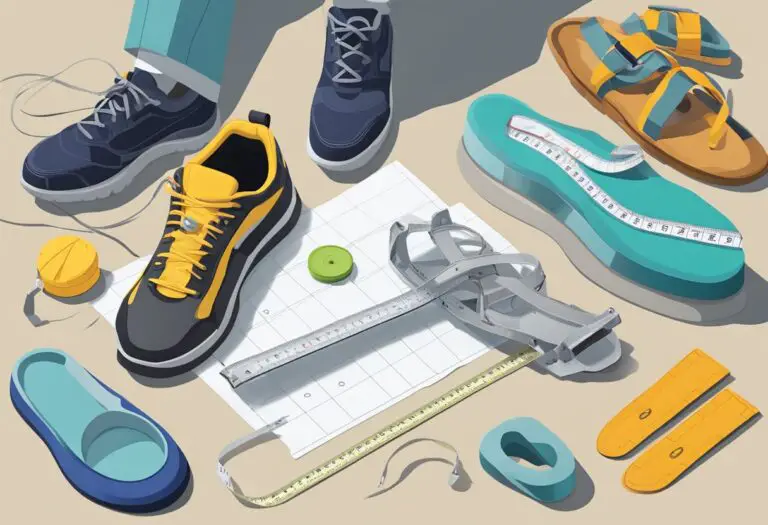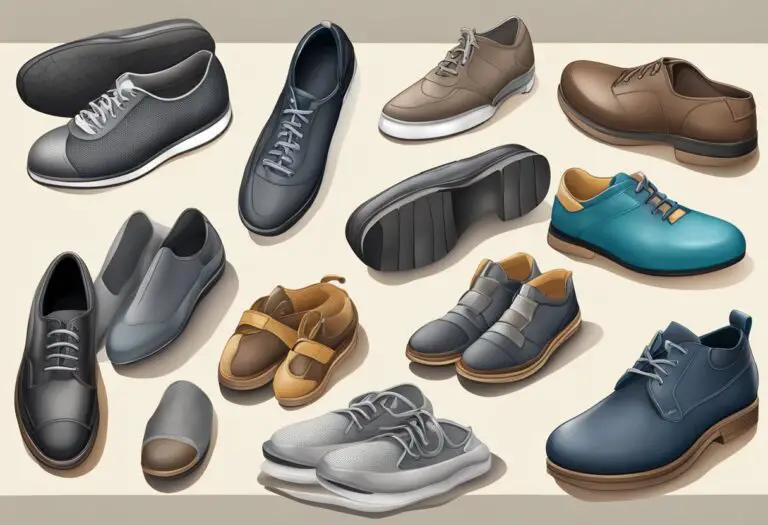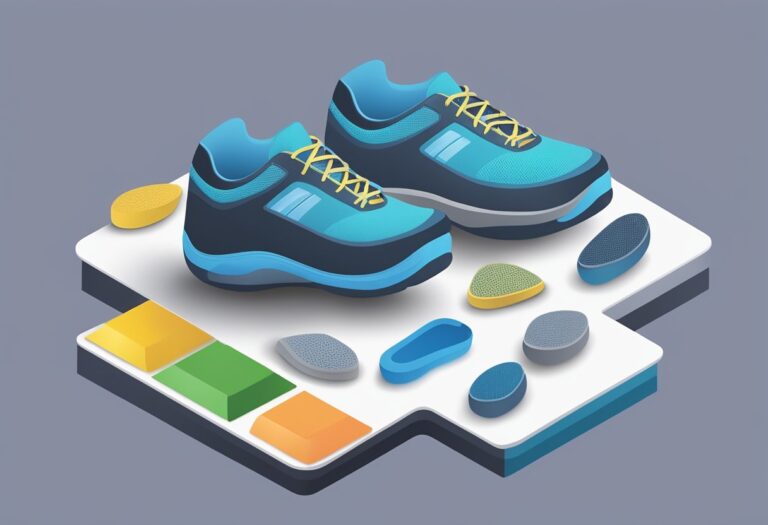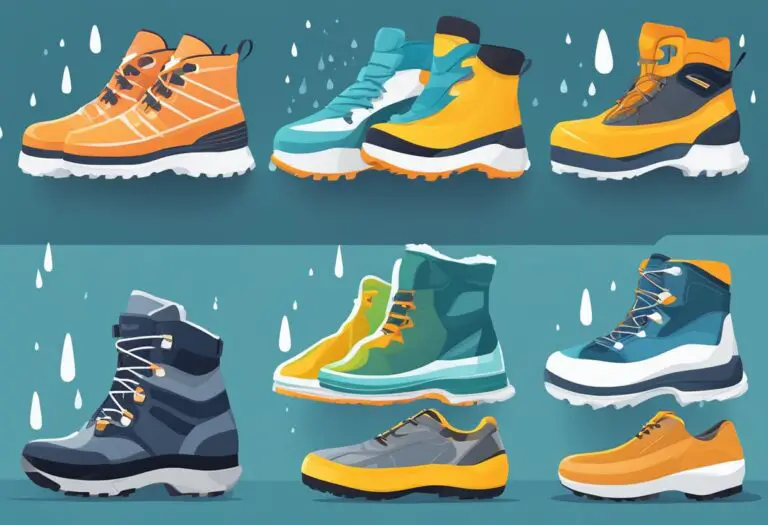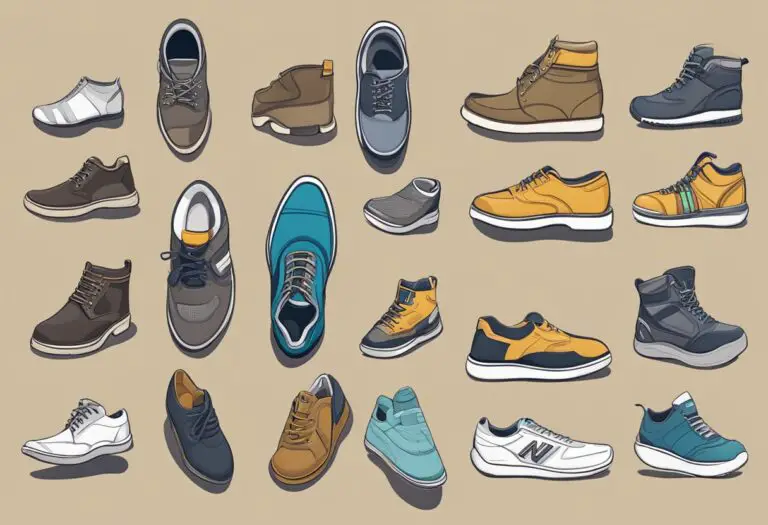What factors should I consider when selecting shoes for different activities like running or hiking?
What factors should I consider when selecting shoes for different activities like running or hiking
When it comes to selecting shoes for different activities like running or hiking, there are several factors to consider. Choosing the right shoes can make a big difference in terms of comfort, performance, and injury prevention. It is important to take the time to evaluate your needs and preferences to ensure that you select the right shoes for the job.

One of the most important factors to consider is the type of activity you will be doing. Running shoes are designed with different features than hiking shoes, and each type of shoe is optimized for its specific use. Running shoes are typically lighter and more flexible, with extra cushioning to absorb impact. Hiking shoes, on the other hand, are designed to provide more support and stability on uneven terrain, with thicker soles and more durable materials.
Another important consideration is your foot type and shape. Different shoes are designed to accommodate different foot shapes, and it is important to find a shoe that fits well and provides adequate support. For example, people with flat feet may require shoes with extra arch support, while those with high arches may need shoes with more cushioning. By taking the time to understand your foot type and shape, you can choose shoes that provide the support and comfort you need for your specific activity.
Understanding Shoe Anatomy

When selecting shoes for different activities, it’s important to understand the anatomy of the shoe. This will help in determining which shoes are best suited for each activity. Here are some key factors to consider when selecting shoes:
Sole Design
The sole of the shoe is the bottom part that comes into contact with the ground. The design of the sole is important as it affects the grip and traction of the shoe. For running shoes, a sole with a waffle or hexagonal pattern is ideal as it provides good grip on the road or track. For hiking shoes, a sole with deep lugs is important as it provides better traction on uneven terrain.
Cushioning and Support
Cushioning and support are important factors to consider when selecting shoes for different activities. Running shoes should have good cushioning to absorb shock and reduce impact on the feet and joints. Hiking shoes, on the other hand, should have good support to provide stability on uneven terrain. Look for shoes with features such as arch support, heel cushioning, and midsole cushioning.
Material and Breathability
The material of the shoe is another important factor to consider. Running shoes should be made of lightweight and breathable materials to prevent overheating and allow for good airflow. Hiking shoes, on the other hand, should be made of durable and waterproof materials to protect against the elements. Look for shoes made of materials such as mesh, synthetic leather, or Gore-Tex.
Overall, understanding the anatomy of shoes is important when selecting shoes for different activities. By considering factors such as sole design, cushioning and support, and material and breathability, you can find the right shoes to meet your needs.
Activity-Specific Features

When selecting shoes for different activities, it is essential to consider activity-specific features. Running shoes and hiking boots, for instance, have different requirements to ensure maximum performance and comfort. Here are some of the features to consider for each activity:
Running Shoes
Running shoes are designed to provide support and cushioning, especially for high-impact activities. Here are some of the features to consider when selecting running shoes:
- Cushioning: Running shoes should have enough cushioning to absorb the impact of each stride. The level of cushioning required depends on the runner’s weight, running style, and the surface they run on.
- Flexibility: Running shoes should be flexible enough to allow natural foot movement. The shoes should bend at the ball of the foot to facilitate a smooth stride.
- Breathability: Running shoes should be breathable to keep the feet cool and dry during high-intensity activities.
- Traction: Running shoes should have good traction to prevent slipping on wet or uneven surfaces.
- Weight: Running shoes should be lightweight to reduce fatigue and improve speed.
Hiking Boots
Hiking boots are designed to provide support and protection for the feet and ankles during long hikes on rough terrain. Here are some of the features to consider when selecting hiking boots:
- Ankle Support: Hiking boots should provide adequate ankle support to prevent injuries on uneven terrain. The boots should be high enough to support the ankle but not too high to restrict movement.
- Waterproofing: Hiking boots should be waterproof to keep the feet dry during wet weather conditions or when crossing streams.
- Traction: Hiking boots should have good traction to prevent slipping on wet or uneven surfaces. The boots should have a sturdy outsole with deep lugs for maximum grip.
- Durability: Hiking boots should be durable enough to withstand the rigors of hiking on rough terrain. The boots should be made of high-quality materials that can withstand wear and tear.
- Fit: Hiking boots should fit well to prevent blisters and other foot problems. The boots should have enough room in the toe box to prevent toe jamming and enough support in the heel to prevent slippage.
In summary, activity-specific features are crucial when selecting shoes for different activities. Running shoes and hiking boots have different requirements, and it is essential to consider these features to ensure maximum performance and comfort.
Fit and Comfort
Determining the Right Size
When selecting shoes, it is important to ensure that they fit properly. Poorly fitting shoes can lead to discomfort, blisters, and even injuries. To determine the right size, it is recommended to measure the feet at the end of the day when they are at their largest. Additionally, both feet should be measured as they may not be the same size.
It is also important to consider the type of activity the shoes will be used for. For example, running shoes may need to be slightly larger to accommodate the foot swelling that occurs during exercise. It is recommended to leave a thumb’s width of space at the end of the shoe to allow for proper toe movement.
Understanding Your Foot Arch
Another factor to consider when selecting shoes is the shape of your foot arch. There are three types of foot arches: low, medium, and high. Understanding your foot arch can help you select shoes that provide the appropriate level of support.
For those with low arches, shoes with motion control and stability features can help prevent overpronation. Those with medium arches can benefit from shoes with a combination of cushioning and support. Shoes with a neutral design are typically suitable for those with high arches as they provide cushioning without additional support.
Overall, selecting shoes that fit properly and provide appropriate support for your foot arch can help ensure comfort and reduce the risk of injury during different activities.
Durability and Quality

When selecting shoes for different activities like running or hiking, durability and quality are important factors to consider. A good quality shoe can provide the necessary support and protection needed for the activity, while a durable shoe can withstand the wear and tear of regular use.
One aspect of durability to consider is the materials used in the construction of the shoe. Shoes made with high-quality materials, such as leather or Gore-Tex, tend to be more durable and resistant to wear and tear. Additionally, shoes with reinforced stitching or rubber soles can also help increase durability.
Quality is also important when selecting shoes for different activities. A high-quality shoe can provide better support and comfort for the feet, which is especially important for activities like running or hiking. Look for shoes with features such as cushioned insoles, breathable materials, and proper arch support.
It’s important to note that durability and quality often come with a higher price tag. However, investing in a good quality and durable shoe can save money in the long run by avoiding the need for frequent replacements.
Overall, when selecting shoes for different activities, it’s important to prioritize durability and quality to ensure that the shoes can provide the necessary support and protection needed for the activity, while also lasting for a reasonable amount of time.


